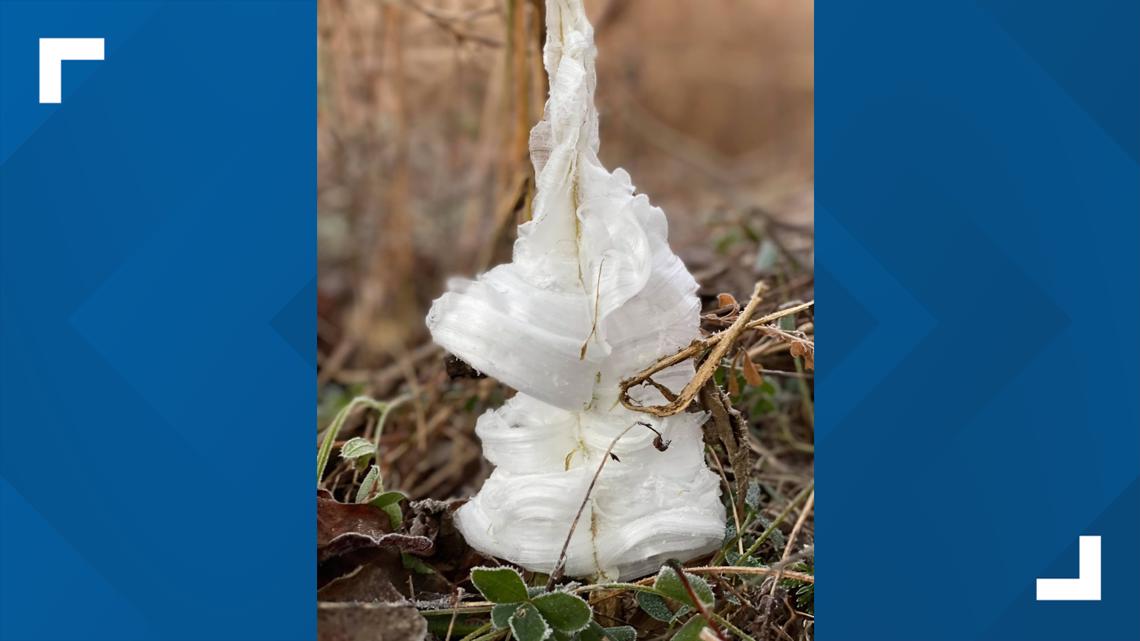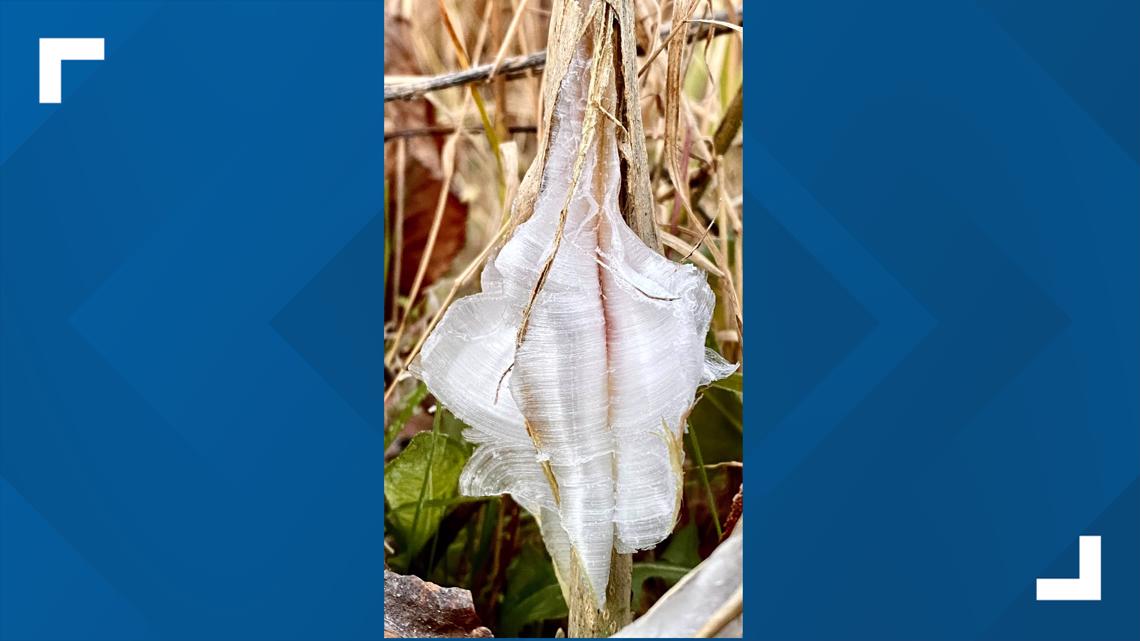LOUISVILLE, Ky. — It's Frost Flower season, but don't blink, because it's a very short season. In fact, it can be only one day of the year. Frost flowers can be found on the forest floor typically in late autumn. But first, what is a frost flower and how do they form?
Frost flowers are very thin icy petals that stem from the slits in the stems of plants. Weather conditions have to be just right for this to occur.
We need below freezing air temperatures, but above freezing ground temperatures, and certain plant stems that haven't previously been frozen.
Ellen Sears found some gems at the Parkland of Floyds Fork this morning...




Here's a summary of the process and more pictures from our local National Weather Service:
"Frost flowers are thin layers (perhaps credit card thickness) of ice that are extruded through slits from the stems of white or yellow wingstem plants, among others. Their formation requires freezing air temperature, soil that is moist or wet but not frozen, and a plant's stem that has not been previously frozen. (Practically speaking, a once per year event, although not all individuals produce frost flowers on the first day of good conditions). The water in the plant's stem is drawn upward by capillary action from the ground. It expands as it freezes and splits the stem vertically and freezes on contact with the air. As more water is drawn from ground through the split, it extrudes a paper thin ice layer further from the stem. The length of the split determines if the frost flower is a narrow or wide ribbon of ice. It curls unpredictably as it is extruded, perhaps from unequal friction along the sides of the split, to form "petals". These flowers, no two of which are alike, are fragile and last only until they sublimate or melt."
Now, let's also understand more about Capillary Action. Capillary action is defined as, "the movement of water within the spaces of a porous material due to the forces of adhesion, cohesion, and surface tension."
The United States Geographic Survey (USGS.gov) describes the process further...
"Capillary action occurs because water is sticky, thanks to the forces of cohesion (water molecules like to stay close together) and adhesion (water molecules are attracted and stick to other substances). Adhesion of water to the walls of a vessel will cause an upward force on the liquid at the edges and result in a meniscus which turns upward. The surface tension acts to hold the surface intact. Capillary action occurs when the adhesion to the walls is stronger than the cohesive forces between the liquid molecules. The height to which capillary action will take water in a uniform circular tube (picture to right) is limited by surface tension and, of course, gravity.
Not only does water tend to stick together in a drop, it sticks to glass, cloth, organic tissues, soil, and, luckily, to the fibers in a paper towel. Dip a paper towel into a glass of water and the water will "climb" onto the paper towel. In fact, it will keep going up the towel until the pull of gravity is too much for it to overcome."
If you would like to share your frost flower photos, you can email them to yourphotos@whas11.com
Here's more about frost flowers and capillary action

